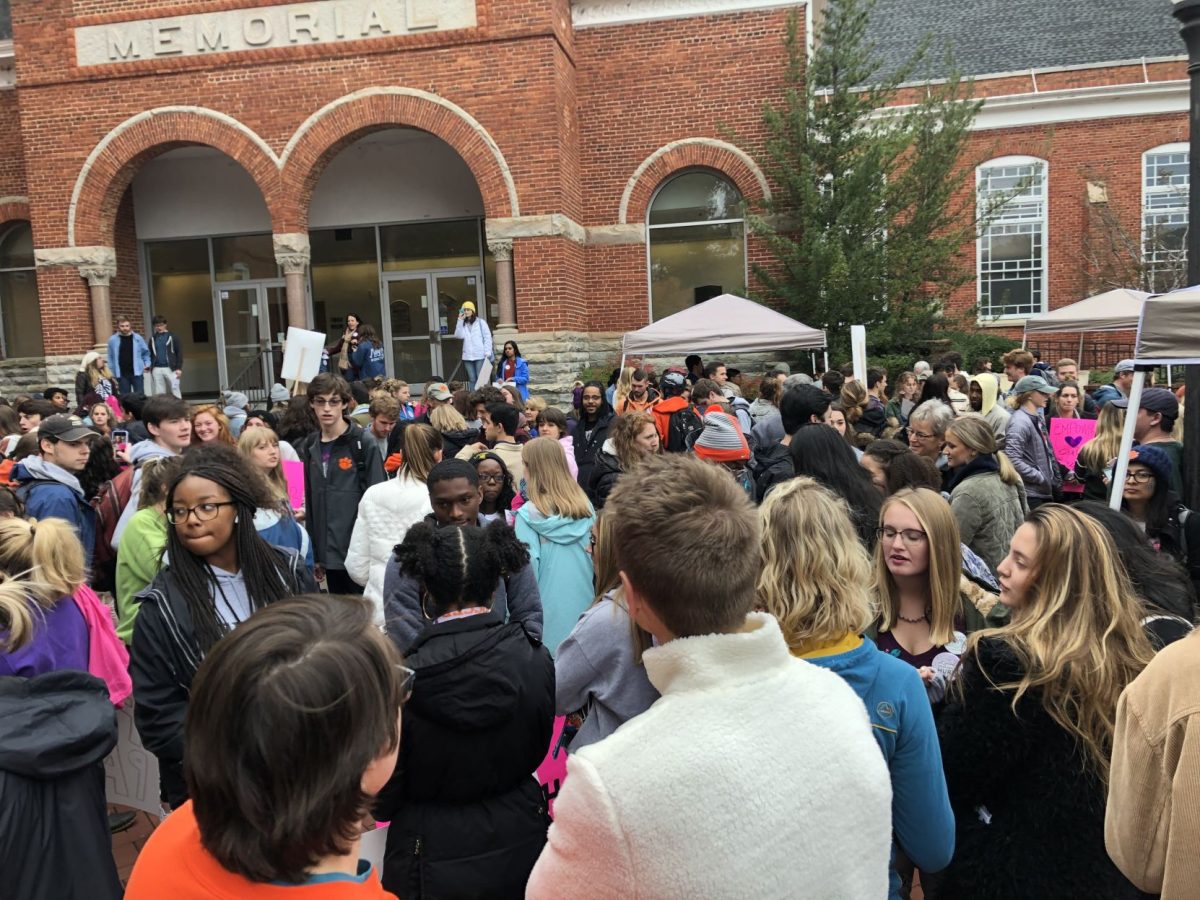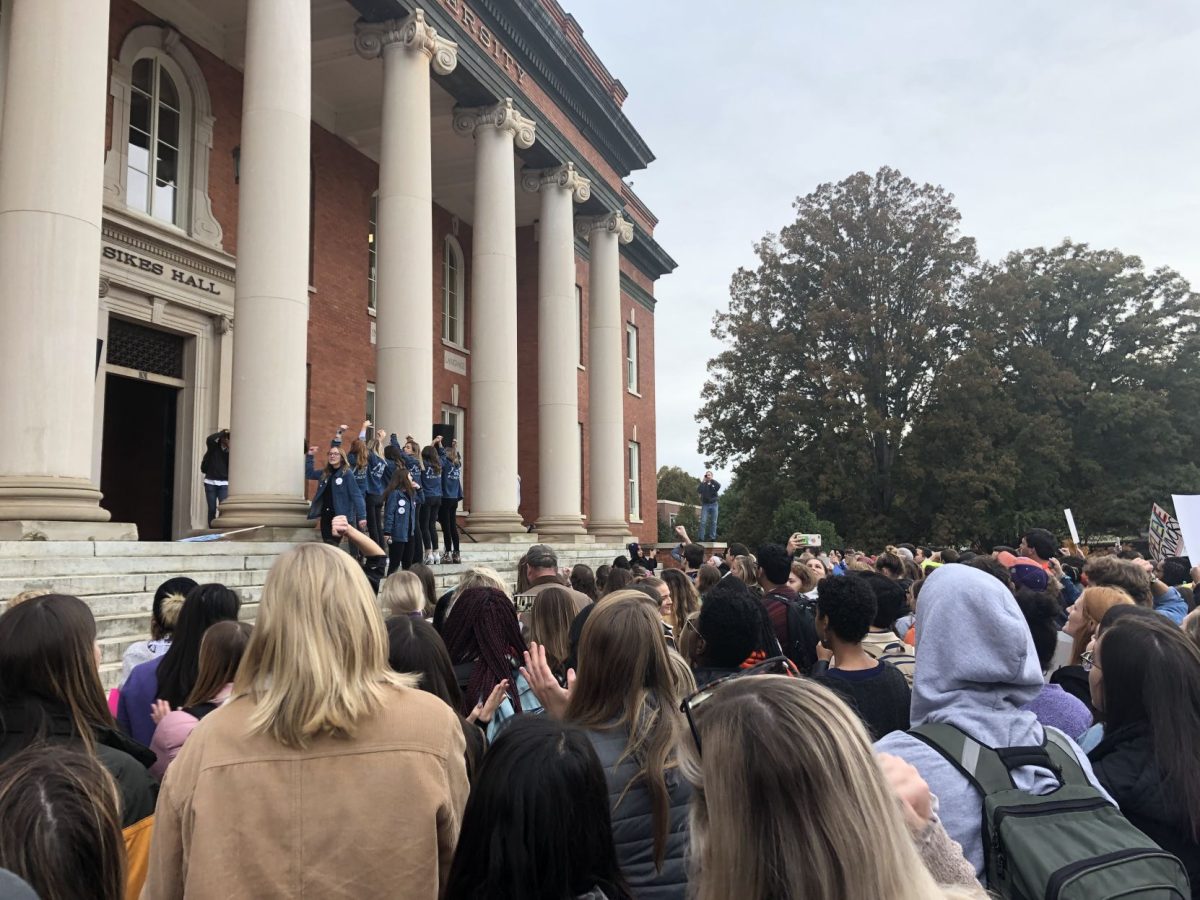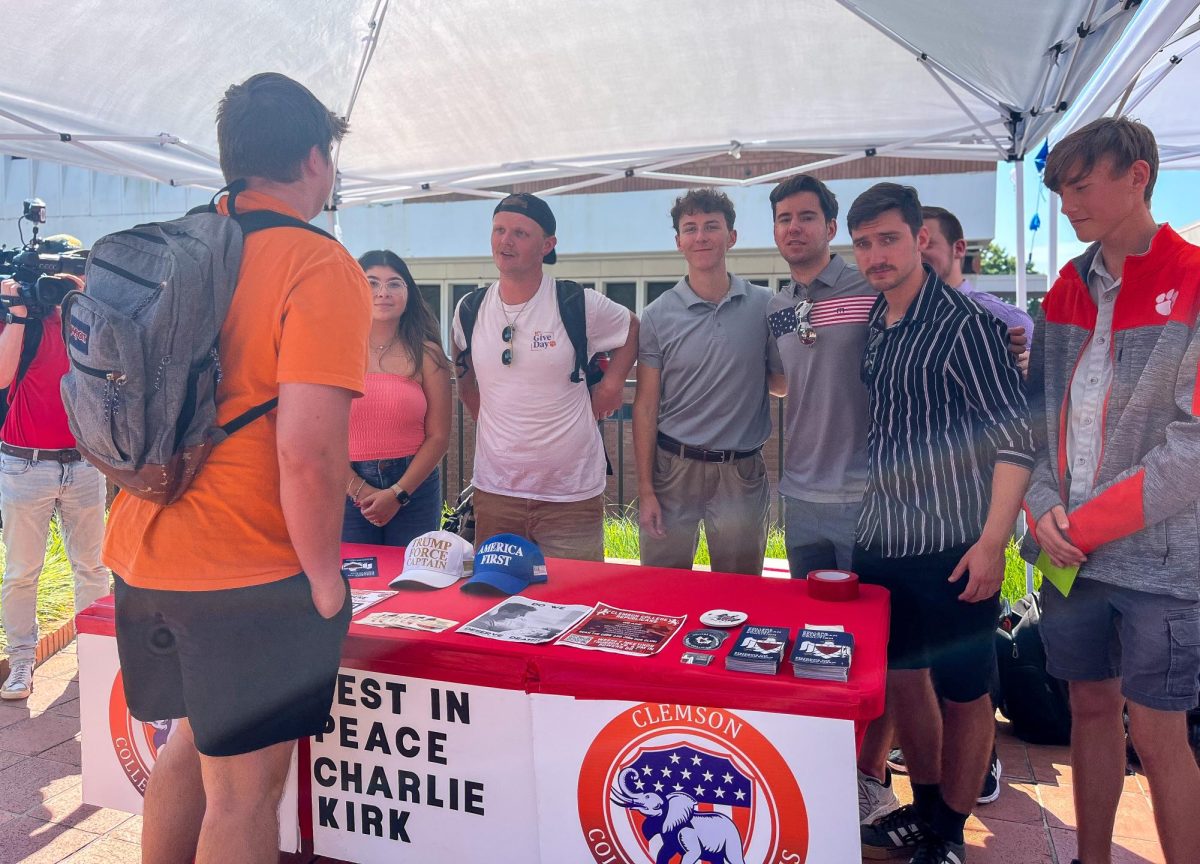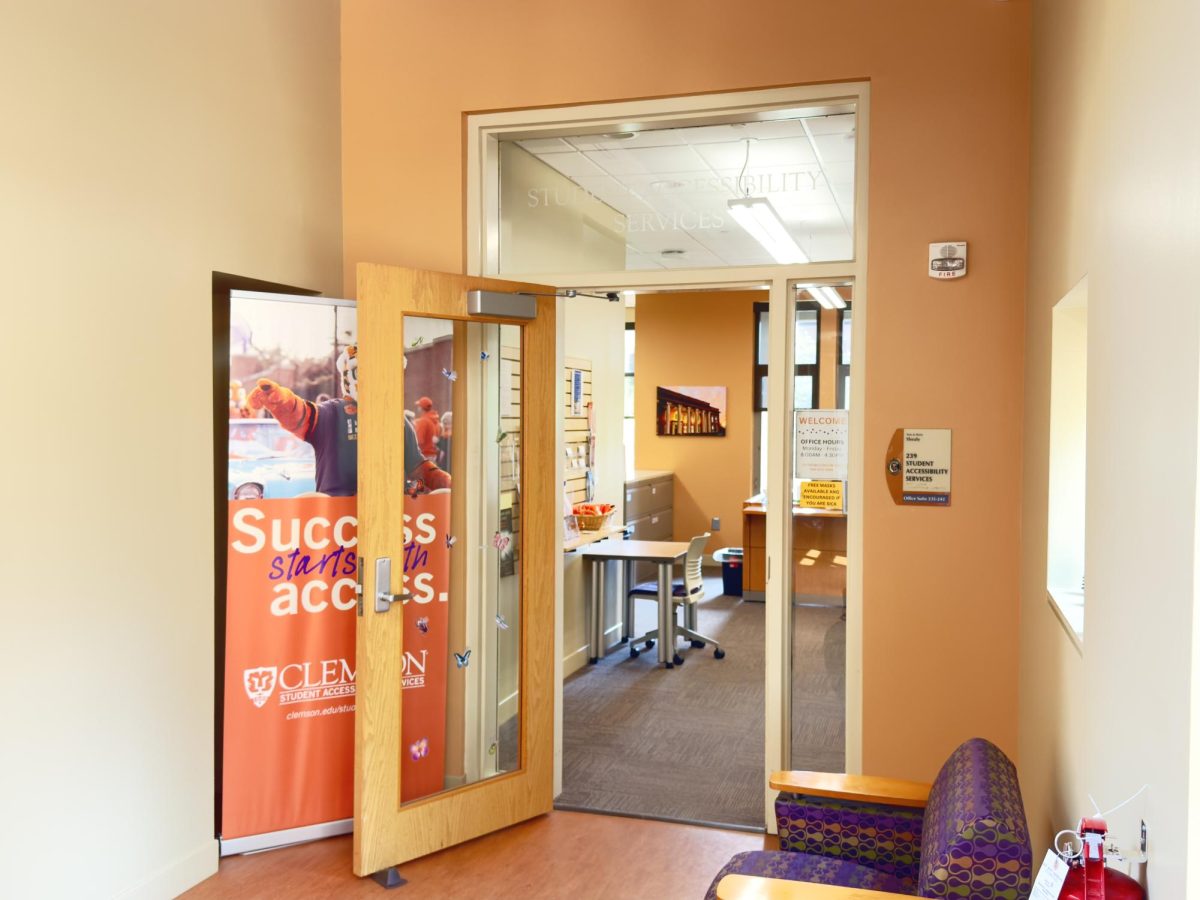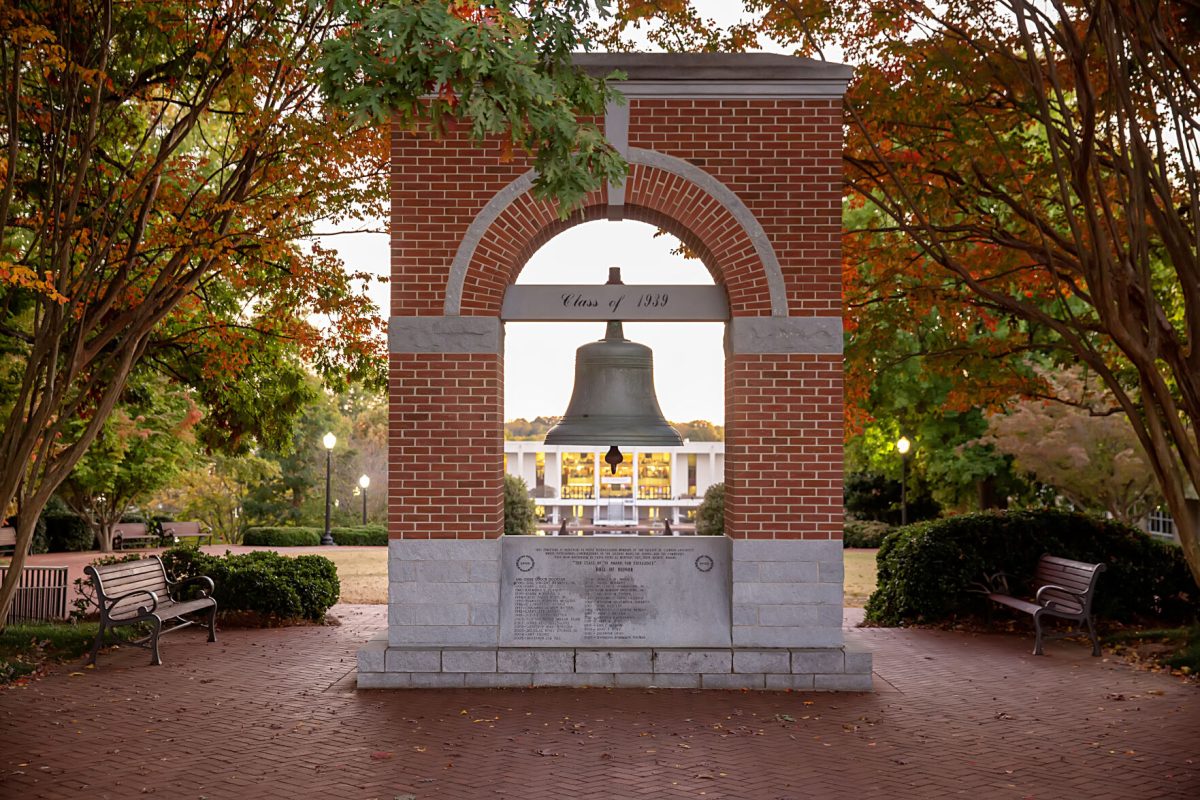On Friday, Nov. 15 at 3:45 p.m., hundreds of Clemson students, staff, faculty and community members gathered in front of Clemson’s belltower to participate in a women’s march against violence. The march followed a 0.9 mile route that looped past Core, across Library Bridge and along the edge of Bryan Mall before ending on the steps of Sikes Hall. The event was initiated by a group of women who made the motivation of the movement quite clear throughout the march.
In 2017, a report published by CollegeStats.org labeled Clemson University as the safest campus in the nation. In 2019, another study conducted by YourLocalSecurity.com marked Clemson as the safest campus in South Carolina. However, many students, particularly members of Clemson’s chapter of It’s On Us, think such labels are undeserved.
Sidney Sickel, a junior language and international trade major, helped to organize the march and spoke at the beginning of the event. “We are marching because we will no longer be suffocated by the facade of No. 1 safest campus,” Sickel said.
Sickel, her fellow organizers and other students have been urging Clemson to not only stop advertising the reported safety of the campus, but also to introduce changes to the available resources for survivors of sexual assault and interpersonal violence.
These students created a petition, written to Clemson President Jim Clements and members of the Clemson administration, three weeks before the march took place. The petition stated that Clemson lacks proper resources for survivors and that the university has failed to provide such resources even when asked. Thus, the students also included several detailed action steps on how change can occur at Clemson University. The steps, shown below, included further expansions within the petition itself. However, these six requests acted as a summarization of the march’s goal.
-
Separation of Title IX and Interpersonal Violence Prevention Offices
-
Hiring of Three (3) Experienced, Confidential, and Certified Advocates
-
Trauma-informed Training for Key Clemson Leadership
-
Restructuring of Student Placement on the President’s Commission on Women
-
Execution of a Campus Climate Survey
-
Creation of a Women’s and Gender Center
These list of changes also acted as a call to action for all those attending the march. Before, after and during the march, a chant of “#CMeToo” arose from the crowd. The hashtag has also been used to reference the march on social media. “We deserve support,” the marchers chanted. “Safest for who?” they asked. When passing crowds of people at Core Campus or on Library Bridge, “join the march” could also be heard.
Alongside the chants were countless signs. Some simply said “I believe” or “Hear our roar,” but some were more pointed. “Survivors’ safety is more important than any national championship,” one read. “No sign is big enough to list all the reasons why I’m here,” another said. Yet another was titled “Causes of Rape” and showed a pie chart. In the legend, short skirts was represented by red, alcohol by blue, flirting by yellow, walking alone by green and rapists by orange; the entire chart was colored in orange.
The marchers, their voices and their signs eventually arrived at Sikes Hall around 4:15 p.m.
Shannon Lambert, the executive director of the Pickens County Advocacy Center, began by speaking on the advances that resources for survivors have undergone in the past few years.
“But we still have a lot of work to do,” Lambert said. “We must support surivors if we want to show that sexual violence will not be tolerated. When someone is brave enough to share their story with you, they immediately need to hear ‘I believe and support you.’”
Alden Parker, a senior psychology major, was another organizer for the march, and she stepped up to speak on Sikes’ steps shortly after Lambert. Parker, using her experiences as a student while at Clemson, spoke of the survivors who do not come forward and do not feel safe on Clemson’s campus. She also pointed out how statistically unlikely it is that only eight sexual assaults were reported at Clemson last year, especially considering one in four women and one in 18 men experience sexual assault during their lifetime.
“If you do the math, that is 3,756 students,” Parker said. “What are you, Clemson administration, going to do about it?”
In an interview following the rally, Parker revealed just how long she has been waiting for something to change.
“We started the discussion with administration two years ago,” Parker said. “However, the #CMeToo movement kinda just pushed forward at the start of the semester…We need more resources on campus. There’s a lack of resources and I believe that all survivors believe to be heard and supported.”
As a way for people to be heard, attendees of the march were encouraged to write instances they’ve felt unsafe on campus on a paper banner. “If you’re not angry, you’re not paying attention,” one person wrote. “I don’t feel safe at Clemson because they have failed in providing resources for surivovrs of rape,” another said.
“I walk for every victim,” the banner read. “Every. One.”
Though the main organizers of the march were all members of It’s On Us, many other organizations also co-sponsored the event. Latinos Unidos, You’re Not Alone, Clemson Rainbow Fellowship, CUSG CODA, Panhellenic Sororities, Clemson Paw Pantry, Clemson Black Student Union, Alpha Chi Omega, Planned Parenthood Generation Action, Clemson University Sexuality and Gender Alliance, the Psychology Department and Clemson University CHANGE all put their support behind the march.
Della Maggio, a junior history and political science major, tabled at the march as president of Clemson’s Planned Parenthood Generation Action. Maggio agreed with the idea that Clemson’s resources for and attitudes towards survivors needs to change.
“Planned Parenthood seeks to fight oppression on campus wherever we find it, and that is beyond gender, race or anything,” Maggio said. “There are so many things I would like to change about Clemson’s campus. I would have to make you a list of like, a hundred things honestly. But, I would say the biggest thing and the most general thing in reference to us is recognition and visibility of student organizations…Clemson just really dismisses that and doesn’t recognize all the work the students put in. We don’t really have any support and we’re doing this all on our own.”
As of 11 p.m. on Saturday, Nov. 16, 2,321 people have signed the petition. The petition and the full proposal submitted to Clemson administration can be found here: https://tinyurl.com/TheTigerClemsonWomenMarch
Students gave speeches following the march at the top of the steps in front of Sikes Hall.



